Dog agility training turns your everyday pup into a focused, speedy athlete. It's a sport packed with fun, full of jumps, tunnels, and quick turns that challenge both brain and body.
Did you know the American Kennel Club says agility is one of the fastest-growing dog sports in the country? That's no surprise, considering how much pups love the thrill of the course and how much their humans enjoy watching them zip through it.
Curious how your dog can master weave poles or leap through tire jumps with confidence? Or how this kind of exercise builds teamwork and trust? Keep reading to learn the steps, gear, and surprising perks of agility training.
What Is Dog Agility Training?

Dog agility training is a fast-paced sport where your dog learns to leap, run, and weave through an obstacle course guided by your voice and hands. It builds focus, boosts speed, and adds serious fun to your pup's week. This kind of training brings mental stimulation and physical exercise together in one exciting challenge for you and your dog.
Overview of Agility as a Sport and Activity
Agility is more than just play. It's a competitive sport where dogs race through jumps, tunnels, weave poles, and other obstacles, all while staying tuned into their owner's signals. Courses test your pup's body awareness, coordination, and teamwork.
Many local clubs offer dog agility courses and competitions, making it easy to join the fun. It's a smart way to keep your dog active, sharp, and proud of their new skills.
How Agility Training Works in Practice
Dog agility training teaches your pup to follow cues while moving through obstacles like tire jumps, contact obstacles, and the pause table. You'll start small, using rewards and body language to guide your dog from one challenge to the next.
Over time, your dog learns proper form, builds confidence, and moves with speed and purpose across the agility ring. Practice and patience make all the difference.
Why It's Popular With Active Dogs and Their Owners
Most dogs love a job to do, and agility gives them just that. It channels energy into obstacle training that is fun and rewarding. For owners, it's a way to bond, play, and stay active too. Classes offer social time for pups and people, while agility trials give everyone a goal to work toward. It's teamwork, exercise, and joy rolled into one.
Benefits of Dog Agility Training
Dog agility training does more than teach your pup to run a course. It fuels their body, sharpens their mind, and deepens your connection. From jump practice to quick turns, each movement works a new skill.
Let's break down exactly how this sport helps your dog grow stronger, smarter, and more confident with each class or practice session.
Physical Exercise and Muscle Engagement
Obstacle training is a full-body workout. Every run builds power, balance, and coordination.
-
Jumps strengthen the back legs
-
Weave poles boost core strength and rhythm
-
Contact obstacles build upper body control
-
Walking the agility course improves stamina
-
Quick turns fine-tune paw placement and timing
Dog agility training improves muscle tone, posture, and total body awareness. Dogs gain speed, flexibility, and endurance by moving through the agility ring with proper form.
Mental Stimulation and Focus Development
Agility training keeps the brain busy and alert. Each cue from the owner teaches the pup how to think fast and stay locked in. Learning to find the next obstacle, stop on a pause table, or wait for a reward trains focus. Body language cues and short time limits push your dog to think ahead. Mental stimulation keeps most dogs happy, engaged, and sharp.
Improved Bond Between Dog and Handler
Agility builds teamwork. Dogs learn to trust their owner's voice and movements, especially when off-leash. They follow signals, respond to directions, and watch for the next move. That kind of teamwork only grows with practice. The bond becomes stronger, as each training class or agility trial gives you both a reason to communicate, move together, and celebrate progress as a team.
Builds Confidence and Socialization Skills

Dog agility training helps shy or hesitant pups break out of their shell. They gain confidence by learning new skills, meeting other pets, and performing in new spaces. From mastering the tire jumps to working around distractions, each challenge builds courage.
Local clubs and classes also give dogs a chance to watch, wait, and hang out with pets of all breeds and sizes. Confidence grows one obstacle at a time.
Related Post: How to Build Confidence in Dogs
Types of Agility Obstacles and What They Train
Each obstacle in a dog agility course teaches something different. Some boost muscle strength, others sharpen focus or improve timing. By mixing equipment, your pup gets a full range of physical and mental training.
Jumps and Hurdles – Building Strength and Timing
Jumping teaches your pup to power up with control. From single bars to triple jumps, the goal is to clear the bar without touching it. Jumps improve back leg strength, balance, and coordination. A dog must watch for cues and land clean to hit the next obstacle on time. Each practice run sharpens muscle control and builds up jumping skills with better timing and form.
Tunnels – Encouraging Speed and Confidence
Crawling or dashing through tunnels helps dogs build trust in themselves. For some pups, running into a dark space takes courage. Once they learn, the tunnel leads somewhere fun, their confidence soars. Tunnels are also great for teaching speed. The more familiar the tunnel becomes, the faster the dog moves. Agility training with tunnels builds momentum and gets dogs excited to keep going.
Weave Poles – Boosting Precision and Agility
Weave poles are tricky and demand focus. Dogs must enter from the correct side and weave through tightly placed poles without missing a step. This teaches foot placement, flexibility, and sharp body awareness. Agility training with weave poles takes patience, but it improves control and focus over time. Mastering the poles is a proud moment for any pup and their owner.
A-Frames and Dog Walks – Training Balance and Coordination
The A-frame and dog walk teach body control. On the A-frame, your pup climbs steeply, touches the contact zone, and comes down with care. The dog walk adds narrow ramps that require steady footing.
Both obstacles build balance and confidence. These teach dogs how to adjust their speed and watch every step. Agility trainers love these tools for full-body coordination.
Pause Tables – Teaching Control and Patience
The pause table helps teach your pup to stop and stay during high energy. Your dog jumps up, lies down or sits, and waits for a count of five. This tests obedience during the excitement of a run. It also shows the judge your dog can listen and follow directions. Agility courses that include pause tables help balance excitement with control.
Tire Jumps – Enhancing Jump Accuracy and Confidence
The tire jump is all about hitting the center. Unlike regular jumps, the tire has a fixed opening that your pup must jump through without touching the sides. This teaches accuracy and proper form. Agility training with tire jumps boosts your dog's aim and confidence. Starting with lower heights and building up helps them feel sure about every leap.
Teeter-Totter (Seesaw) – Improving Nerve and Balance
The teeter-totter moves as your dog walks across, which can feel strange at first. At the start, many dogs pause or back off once it tips. Training with the seesaw builds bravery and body control. Your dog learns to adjust their balance and stay calm when the ground shifts. This obstacle builds nerve, stability, and trust in the equipment.
Setting Up Your Dog for Agility Success
Before your pup jumps into the agility ring, it helps to prep the basics. From checking their joints to picking the right equipment, a little planning goes a long way. Dog agility training becomes smoother and more rewarding when your dog feels ready, rested, and eager to learn.
Assessing Your Dog's Health and Physical Condition
A strong body makes training safer and more fun. Your vet can help make sure your pup is ready for action.
-
Get your dog's hips, shoulders, and elbows checked
-
Ask about joint swelling or signs of reduced mobility
-
Make sure your dog is at a healthy weight
-
Watch how they walk, run, and jump
-
Skip high-impact moves for growing puppies
Good conditioning means fewer injury risks and better results on the agility course.
Choosing the Right Equipment for Home or Class Use
Start with basic gear that fits your dog's size and skill level. Many pet parents use kits that include tire jumps, tunnels, and weave poles. For at-home practice, soft tunnels and adjustable jumps work great. Some prefer building their own equipment, like balancing a broomstick between buckets.
If you plan to compete, regulation gear helps your pup get used to official obstacle spacing and form. Always check for safety and stability before training.
Finding a Safe, Spacious Practice Area
Agility training needs room to move. Look for flat ground where your dog can run without slipping. Backyards work well if they're clear of holes, sharp rocks, or tight corners. Some local clubs offer rental space with full agility setups. A big, grassy spot or a quiet park can also work for simple practice. Just make sure your pup stays on track and out of traffic.
Step-by-Step: How to Start Dog Agility Training

Every dog starts at square one, even the fast ones flying through the agility ring. The key is to teach one step at a time. With the right plan, your pup builds skills, gains confidence, and stays excited to train. Let's break it down.
Step 1 – Start With Basic Obedience and Focus Commands
Agility needs solid listening skills. Start with obedience before adding obstacles.
-
Teach sit, stay, and come
-
Add "watch me" for better eye contact
-
Practice walking on a leash with a focus
-
Work on off-leash recall in quiet areas
-
Keep commands short and clear
These basics help your dog follow directions during agility training with fewer distractions.
Step 2 – Introduce One Obstacle at a Time
Rushing can confuse your pup. Start with one obstacle, like a tunnel or jump. Let them sniff it, walk through slowly, and build comfort. Use short, fun reps with lots of praise. The goal is to create trust and curiosity. Once they enjoy it, they'll move faster with confidence.
Step 3 – Use Treats and Positive Reinforcement
Agility is more fun with snacks. Treats and praise help your dog link training with rewards. Use their favorite treat when they complete a new skill or follow a cue. Toss one after a jump or give a few on the pause table. Keep it fun, light, and exciting every step of the course.
Step 4 – Combine Multiple Obstacles Slowly
When your pup feels good with single obstacles, start linking them together. Move slowly and watch for signs of confusion.
-
Begin with two simple obstacles
-
Let your dog rest between runs
-
Watch their focus and body language
-
Only add more when they're ready
-
Keep directions clear with body cues
Going slow builds understanding and keeps your pup excited to train.
Step 5 – Build Endurance and Challenge Over Time
Agility isn't just about speed, it's also about lasting through a full run. As your pup improves, slowly increase the number of obstacles. Stretch their sessions a little longer each week. Use a time limit to keep them moving with focus. A conditioning program helps build strength and stamina.
Step 6 – Practice Short Sessions Frequently
Training should feel like a game, not a chore. Keep sessions under ten minutes. You can practice daily, but make sure your dog stays rested and ready. A quick jump course or tunnel run is enough to stay sharp. Frequent short bursts build muscle memory without burning your pup out.
Step 7 – Track Progress and Avoid Overtraining
Every dog learns at their own pace. Use a notebook or video to track what your pup has mastered. Watch for signs of irritation or tired paws. Rest is part of training too. If your dog feels sore or loses focus, take a break. Progress happens faster when your dog feels fresh and eager.
Dog Breeds That Excel in Agility
Some breeds catch on quickly and love the action. These dogs often have a natural focus, drive, and energy that fits well with agility training.
-
Border Collies are known for speed and focus
-
Shelties love quick turns and obstacle training
-
Australian Shepherds work hard and follow cues
-
Jack Russells bring bounce and bravery
-
Poodles mix brains with great jumping form
Most dogs can learn, but these pups often lead the pack.
High-Energy Breeds vs. Low-Energy Breeds
High-energy breeds love to move and think fast. They shine on an agility course with quick reactions and eagerness to play. Low-energy dogs may enjoy the sport at a slower pace. The key is to match the training with the dog's energy. Both types can benefit from mental stimulation, obstacle fun, and weekly class time with a good dog trainer.
Can Older Dogs or Small Breeds Do Agility?
Yes, they can. Older dogs may need lower jumps and longer rest breaks, but they still enjoy the challenge. Small breeds like Papillons and Terriers often love weaving through obstacles and leaping with purpose. With a smart conditioning program and patience, dogs of any age or size can enjoy the fun and benefits of dog agility training.
Joint and Muscle Support for Agile and Active Dogs

Agility dogs move fast and land hard. That means their joints and muscles take on a lot. To keep your dog feeling strong and ready, the right support matters. Good care means fewer setbacks and more play, paws down.
Why Muscle Recovery and Joint Care Matter
Every time your pup jumps or weaves, their joints and muscles work overtime. Without proper care, this can lead to soreness or reduced mobility. Active dogs need a recovery plan just like human athletes.
Rest, hydration, and supplements can support the joints and keep muscle tension low. Over time, this helps your dog stay strong and avoid injury during agility training.
Using Natural Joint and Mobility Supplements
Strong joints keep your pup jumping, weaving, and sprinting without slowing down. We offer both CBD and non-CBD options designed to support healthy movement in active dogs.
- CBD Dog Treats + Joint and Mobility Care. These crunchy pumpkin spice and cinnamon treats blend turmeric and boswellia for soothing support. They help ease puffiness in the joints and promote stronger, more flexible movement. Broad-spectrum CBD oil adds calming support for everyday aches.
- CBD Mobility Chews for Dogs. These soft chews are packed with natural ingredients like turmeric and hemp seed powder. They come in three strengths, making them great for puppies and senior dogs alike. With a smokey pumpkin and apple flavor, they're tasty and easy to chew.
- Multivitamin Soft Chews for Dogs. These daily chews help maintain strong joints with glucosamine and MSM. They also support digestion and skin health with probiotics and salmon oil. Dogs love the flavor, and owners love the complete wellness boost.
Using Natural Muscle Support Supplements
Agility dogs use every muscle in their body. That's why we created our Muscle Support Soft Chews for Dogs. These tasty peanut butter and banana treats include DMG, lysine, potassium, and L-carnitine to support strength and endurance. They help maintain muscle tone and are easy to give after each training session. These chews make a recovery feel like a treat and keep your dog competition-ready.
Common Agility Training Mistakes to Avoid
Dog agility training is exciting, but a few simple mistakes can slow progress or cause setbacks. Learning what to avoid is just as important as knowing what to do. The next few tips can help your pup stay safe, happy, and eager to train.
Rushing Progression Too Quickly
Trying to teach too much too fast can confuse your pup and lead to sloppy form. Dogs need time to build confidence with each obstacle. Start with basics and move forward only when your dog shows they're ready. A slow, steady pace helps build body awareness and proper form. Agility training should feel like a game, not a race to finish.
Not Reinforcing Positive Behavior
When your dog makes a smart move or follows a cue off leash, make sure to celebrate it. Skipping rewards can lead to boredom or distraction. Use treats, toys, or cheerful praise to show your pup they’re on the right track. Good behavior sticks when it feels exciting and rewarding. A happy tail and a tasty treat go a long way.
Ignoring Signs of Fatigue or Stress
Even the most active dogs need breaks. Watch closely for signs your pup needs rest.
-
Slower responses or sloppy movements
-
Refusing to complete familiar obstacles
-
Excessive panting or drooling
-
Pacing, yawning, or walking away
-
Ears pinned back or lowered tail
Pushing through these signs can lead to injury. Let your dog relax before jumping back into agility training. Rest builds recovery and keeps the sport safe and fun.
Is Dog Agility Training Right for Every Dog?
Most dogs can try agility training, but it's not one-size-fits-all. The best fit depends on your dog's energy, interest, and body condition. Agility should be safe, fun, and rewarding. Some pups race through tunnels with confidence.
Others may prefer low-impact play or short obstacle runs. Training should always match your dog's comfort level and needs.
Temperament, Motivation, and Health Considerations
Every dog brings something different to the agility ring. Keep these things in mind:
-
Temperament. Confident, curious dogs enjoy new challenges
-
Motivation. Food-driven pups are often eager to learn
-
Health. Dogs with joint aches may need lighter activities
-
Focus. Easily distracted dogs may need extra practice
A dog trainer or vet can help you figure out what agility training style works best for your pup. The goal is to keep things positive, safe, and full of fun.
Final Thoughts – Building a Happy, Agile Pup Through Training
Dog agility training is more than jumps and tunnels. It's about bonding, building trust, and giving your dog a job they enjoy. From learning weave poles to running a full agility course, every step is packed with purpose.
When you support your pup with proper rest, rewards, and the right care, the experience becomes even better. HolistaPet's CBD dog treats, mobility chews, and multivitamins help active dogs stay comfortable and ready to play. With the right mix of patience, training, and care, your pup can thrive in the agility ring and beyond.
Browse All Holistapet Dog Care Blogs.

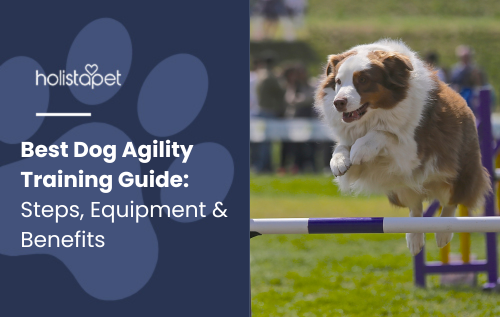
 CBD Oil for Dogs - Fast Acting
CBD Oil for Dogs - Fast Acting
 Chicken Flavored CBD Oil For Dogs - Easy Dose
Chicken Flavored CBD Oil For Dogs - Easy Dose
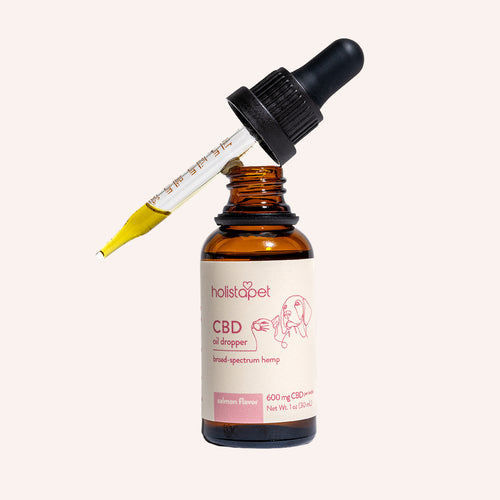 Salmon Flavored CBD Oil For Dogs - Highly Rated
Salmon Flavored CBD Oil For Dogs - Highly Rated
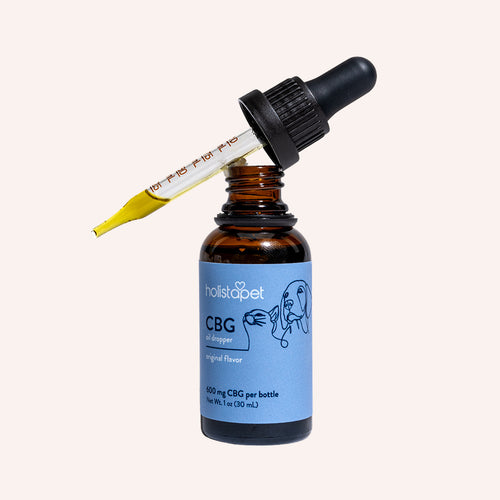 CBG Oil for Dogs and Cats - Loved by Thousands
CBG Oil for Dogs and Cats - Loved by Thousands


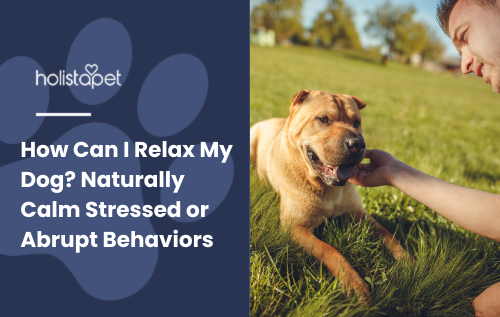
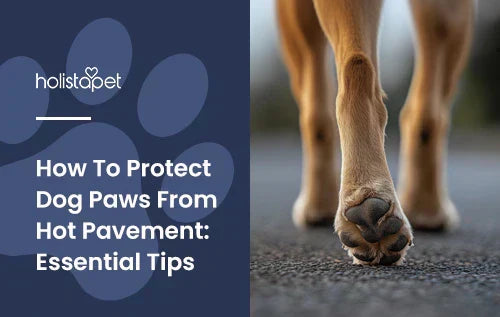

Leave a comment
All comments are moderated before being published.
This site is protected by hCaptcha and the hCaptcha Privacy Policy and Terms of Service apply.